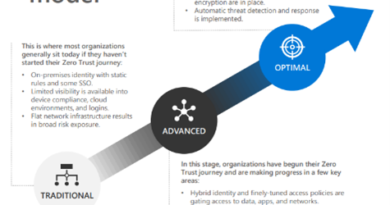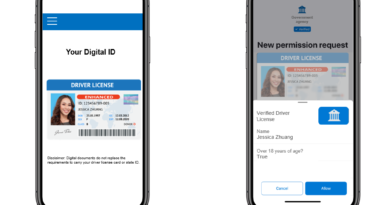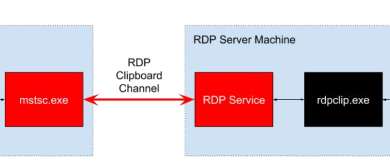Secure your healthcare devices with Microsoft Defender for IoT and HCL’s CARE
It wasn’t long ago that medical devices were isolated and unconnected, but the rise of IoT has brought real computing power to the network edge. Today, medical devices are transforming into interconnected, smart assistants with decision-making capabilities.
Any device in a medical setting must be designed with one core priority in mind: delivering patient care. Medical professionals need instant access to data from devices with minimal friction so they can focus on what they do best. But at the same time, any device holding sensitive medical records must be secure.
To balance these needs, security software for medical devices must be lightweight enough to maximize the performance of the device without overloading the processor, taxing battery life, or putting the user through cumbersome processes. It must be high-performing and reliable with great battery life, so the device is always ready and works every time it’s needed.
Recently, Microsoft and global technology services firm HCL Technologies teamed up to help solve the security challenge with a high-performance solution for medical devices. The result is a new reference architecture and platform for building secure medical devices and services based on HCL’s Connected Assets in Regulated Environment (CARE), Microsoft Defender for IoT, and Azure IoT.
By freeing medical device manufacturers from the need to build security solutions and cloud services, this new platform will enable them to focus on their own core mission and strengths, which are healthcare-related innovation and patient care, even as they build new, better, and more secure medical devices.
Combining HCL’s CARE and Microsoft Defender for IoT
As a long-time Microsoft partner, HCL brings deep expertise in applications, systems integration, network engineering, and managed services.
Built on Microsoft Azure, HCL’s CARE Platform has been designed and developed with security best practices and standards in mind. The platform provides the foundation and platform that medical device manufacturers need to develop innovative high-performance healthcare services and devices while ensuring an integrated security approach from the cloud to the network edge.
By including Microsoft Defender for IoT in the device itself, device builders are able to create secure-by-design, managed IoT devices. Defender for IoT offers continuous asset discovery, vulnerability management, and threat detection—continually reducing risk with real-time security posture monitoring across the device’s operating system and applications.
Partner Director of Enterprise and OS Security for Azure Edge and Platform at Microsoft, David Weston, highlighted the value of this collaboration saying, “By partnering with HCL to incorporate Defender for IoT into HCL’s CARE, we see a bright future for medical device manufacturers to build secured medical devices, with minimal effort.” Sunil Aggarwal, Senior Vice President at HCL and Client Partner for Microsoft, added, “HCL’s CARE enables medical original design manufactures (ODMs) and original equipment manufacturers (OEMs) to quickly develop new devices and solutions focused on patients’ needs. By including Defender for IoT, those devices benefit from Microsoft’s deep security expertise, thousands of security professionals, and trillions of security signals captured each day.”
The combined Microsoft and HCL solution for healthcare IoT provides the high-performance security needed to protect the sensitive data on the medical device—in transit and in the cloud. By using a combination of endpoint and network security signals, the system can monitor what’s happening on the network, in the operating system, and at the application layer while keeping a pulse on the integrity of the device. This combination of external and internal security signals yields advanced security not often found on medical devices, which are typically monitored using only network data.
Advanced threat detection with Defender for IoT
CARE’s use of Defender for IoT offers the best possible security using Defender’s agent-based monitoring. This means security is built directly into IoT devices with the Microsoft Defender for IoT security agent, which supports a wide range of operating systems including popular Linux distributions. With an agent, richer asset inventory, vulnerability management, and threat detection and response is possible.

Figure 1. Devices are monitored and assessed for vulnerabilities and security recommendations. The combination of network and endpoint signals enables a deeper assessment and a broader range of detections.
Defender for IoT security monitors the security of the device and enables the following scenarios for medical device manufacturers using HCL’s CARE with Defender for IoT:
- Asset inventory: Gain visibility to all your IoT devices so operators can manage a complete inventory of their entire healthcare IoT fleet.
- Posture management: Identify and prioritize misconfigurations based on industry benchmarks and software vulnerabilities or anomalies in the software bill of materials (SBOM) that may arise from supply chain attacks and use integrated workflows to bring devices into a more secure state.
- Threat detection and response: Leverage behavioral analytics, machine learning, and threat intelligence based on trillions of signals to detect attacks through anomalous or unauthorized activity.
- Microsoft Security integration: Defender for IoT is part of the Microsoft security information and event management (SIEM) and extended detection and response (XDR) offering, enabling quick detection and response capabilities for multistage attacks that may move across network boundaries.
- Third-party integration: Integrates with third-party tools you’re already using, including SIEM, ticketing, configuration management database (CMDB), firewall, and other tools.
Powerful automated services for detection and response
HCL’s CARE Gateway and CARE Device Agent complement Defender for IoT’s security and can help capture application-level security events and send them into Defender for IoT analytics services, such as an attempt to connect an unknown device, use of invalid provisioning credentials, attempts to run unauthorized commands remotely, short-and-lengthy remote access sessions, anomalies related to data transfer rate, event sequence anomalies, and more.

Figure 2. Medical devices send security and other types of events to HCL’s CARE Gateway which forwards data to the Azure IoT hub. Security events are forwarded to the Defender for IoT cloud services while non-security-related events are sent to HCL’s CARE Core and business app.
Integrating HCL’s CARE with Defender for IoT can protect and monitor connected medical devices and gateways too. The CARE Platform integrated with Defender for IoT provides a powerful solution to secure healthcare devices:
- CARE Cloud runs in Azure, utilizing Azure cloud security services to ensure that customers’ health data is secure and accessible only to authorized persons.
- CARE Device Gateway keeps devices isolated from the public internet.
- The Defender for IoT micro agent can help to capture events at the system level and push them to Defender for IoT analytics services, along with the service level events captured by gateway itself.
- Device Agent connects to Device Gateway to get events out. It can also capture device software level events and push them to Defender for IoT analytics services through the Device Gateway.
- CARE Cloud can make critical events captured at Defender for IoT analytics services actionable, such as gracefully isolating medical devices from the network and alerting device owners.
- CARE Reusable Modules and design guidelines make the application and connected device secure by enabling secure design, development, and deployment. This includes static and dynamic application security testing and software composition analysis.
- CARE can also act on critical events by alerting the device owners’ IT security, and sending commands to devices for network isolation, graceful shutdown, and other preconfigured actions.
Find out more
Both Microsoft and HCL are excited to bring this new platform and security technologies to the medical device industry, and we invite you to learn more about how HCL’s CARE and Defender for IoT deliver the security that medical device manufacturers need. Using these technologies, manufacturers can focus more on medical and patient innovation and the quicker delivery of new solutions to the marketplace.
These new security capabilities are available today. Medical device manufacturers and OEMs should check out HCL’s CARE, Microsoft Defender for IoT, and Microsoft’s recently announced Edge Secured-core preview.
If you are an IoT solution builder, reach out to the Azure Certified Device team. We are ready to work with you!
To learn more about Microsoft Security solutions, visit our website. Bookmark the Security blog to keep up with our expert coverage on security matters. Also, follow us at @MSFTSecurity for the latest news and updates on cybersecurity.
READ MORE HERE



